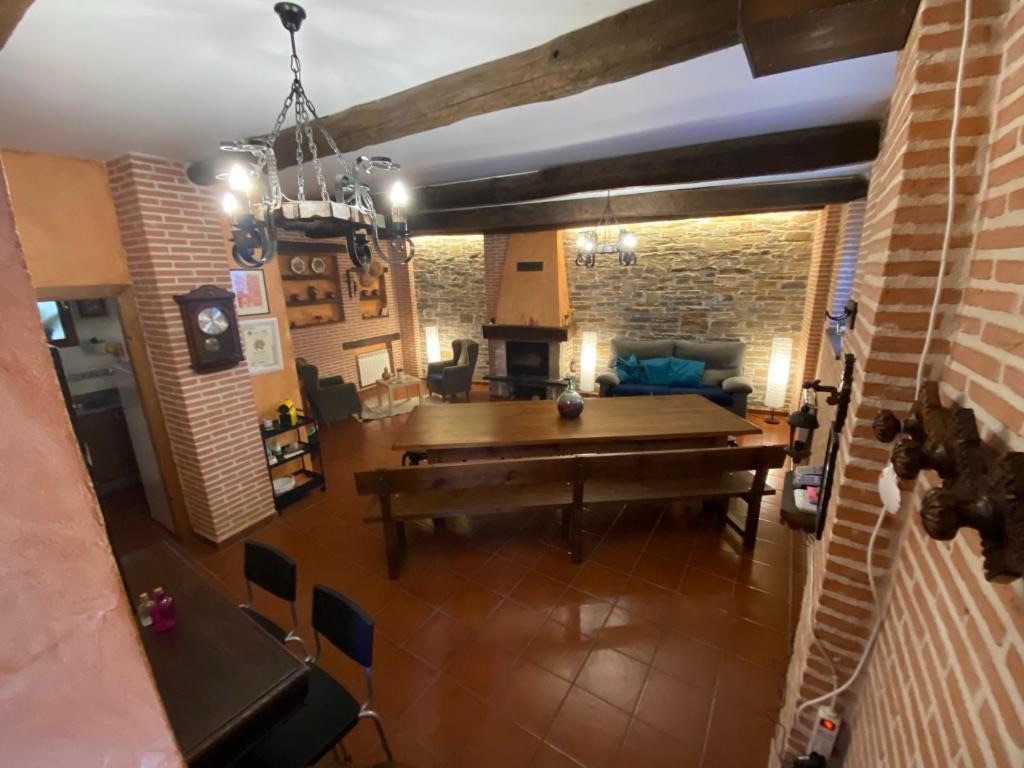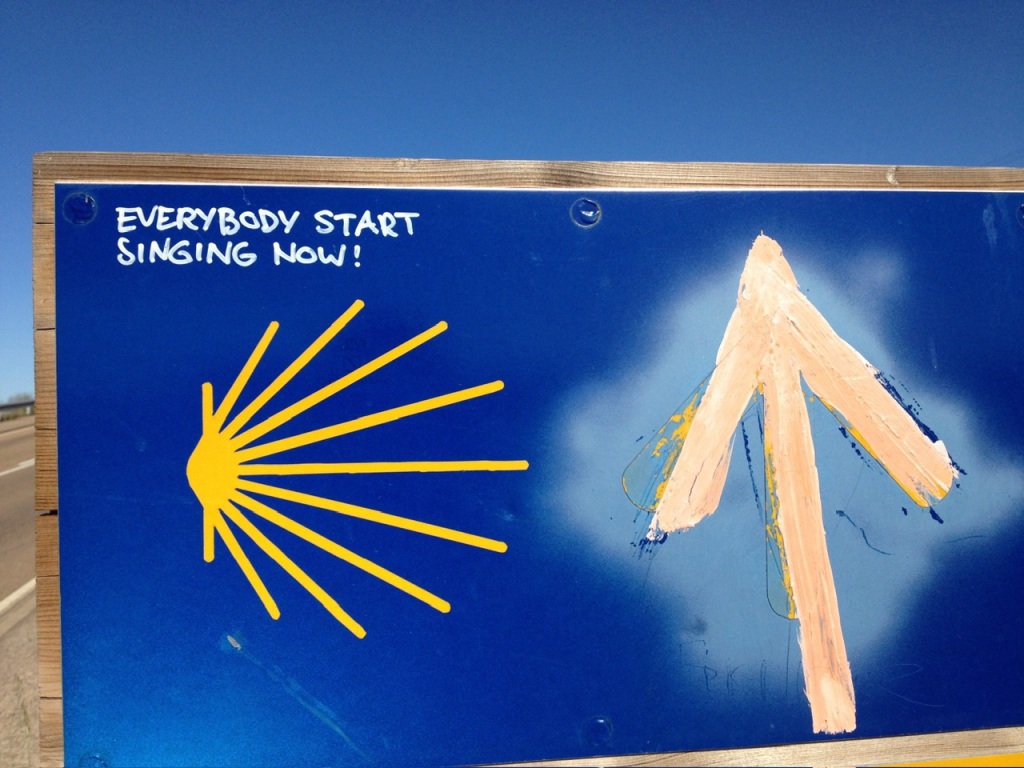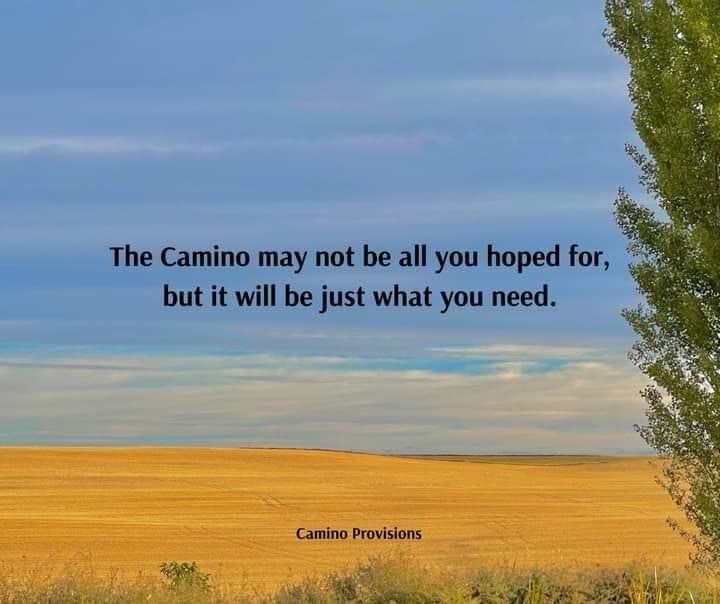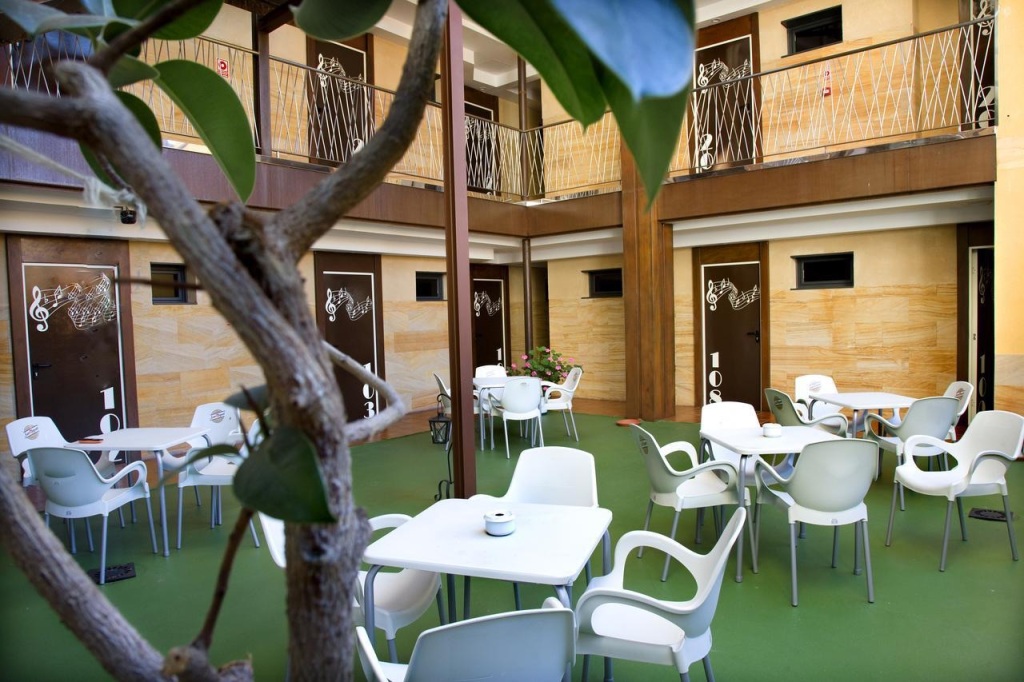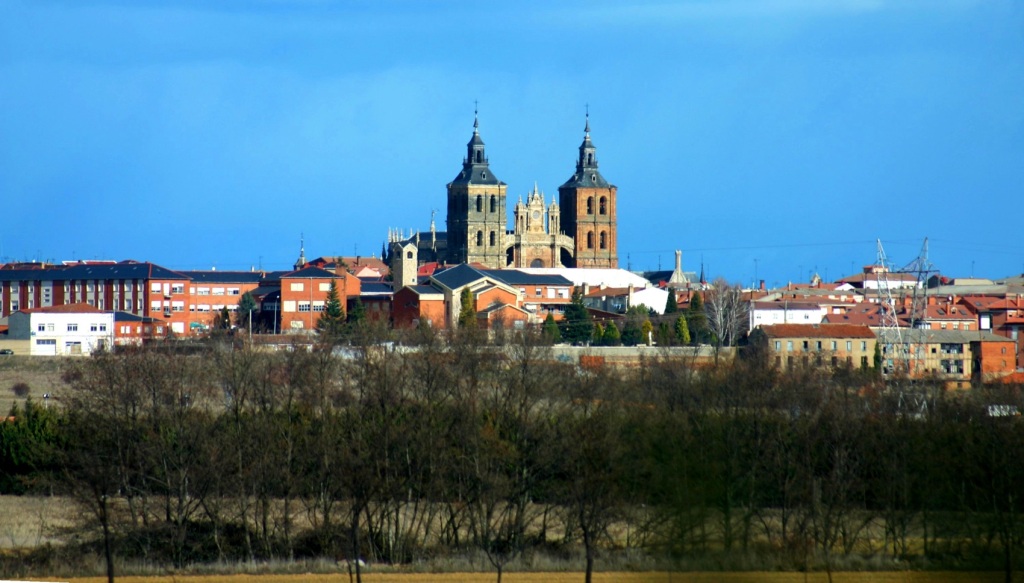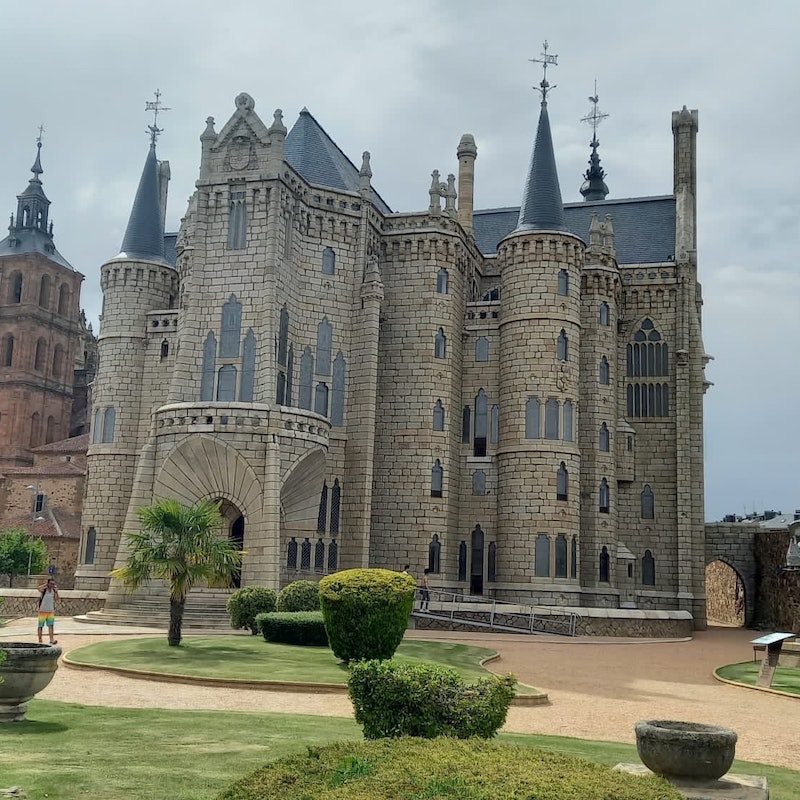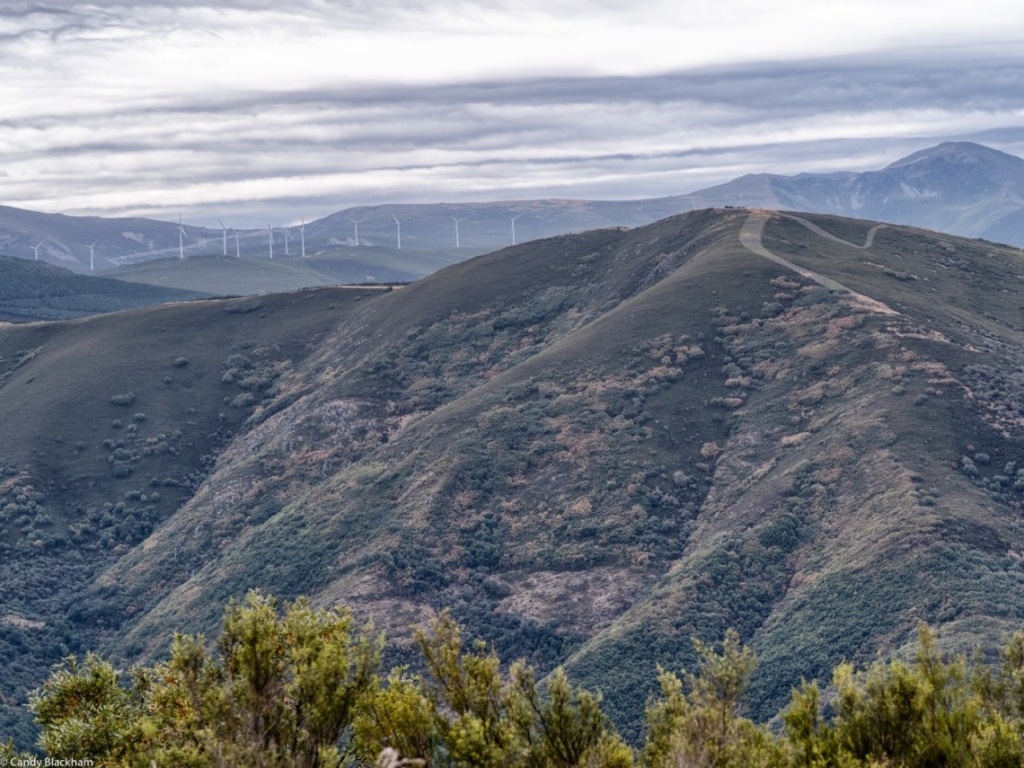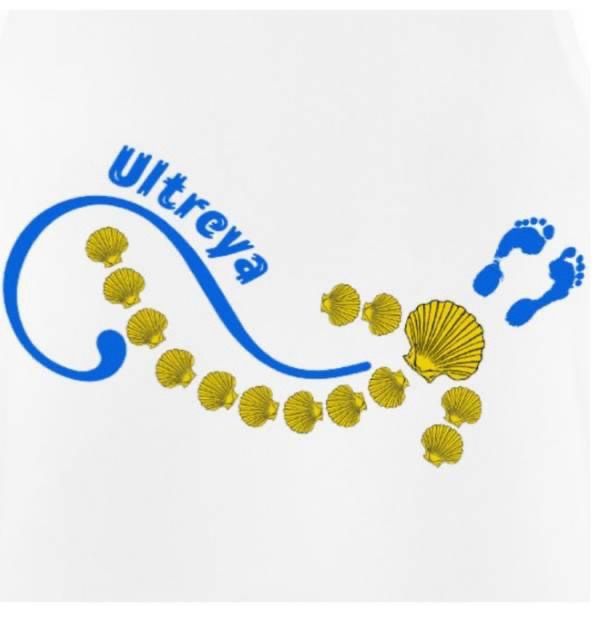Music for this Etape is….https://music.youtube.com/watch?v=9yCsThM4Ibw&si=S2gNe4HKMDLEb2zS Edward Elgar’s “ Triumphal March from Caractacus”.
This should be a memorable stage of our Camino.
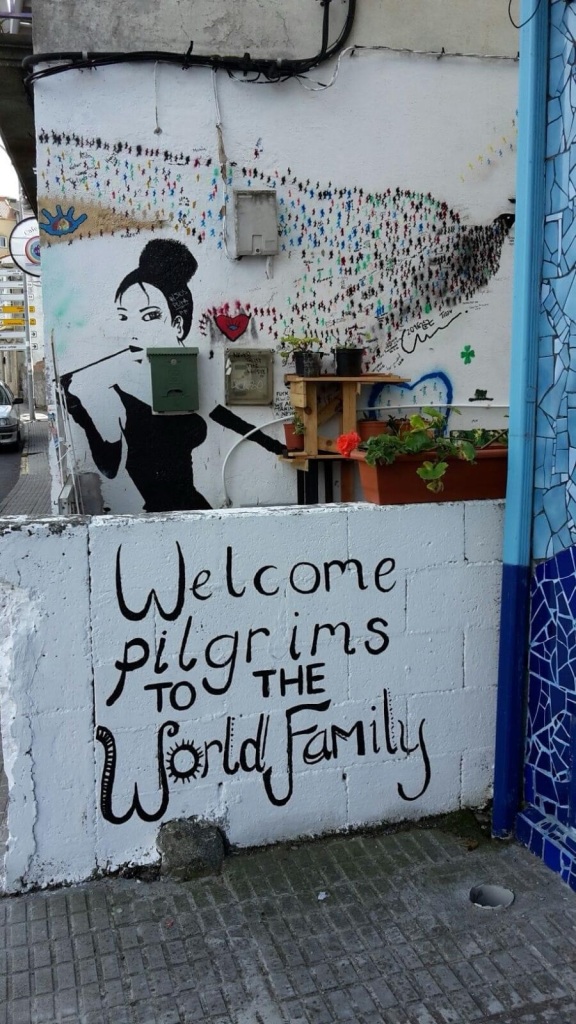
And in the thick of Leon’s mountains – a blissful stretch
We should ensure we have plenty of water ( rehydration tablets advised ) as we continue the gradual climb out of Rabanal. Stone walls and a dirt path demarcate the Camino. It will soon enter a passage that is pure wild territory for the next 5.6 KM. Steep in places but generally steady.

A long ascent in which we will climb 280 metres in altitude all at once until we reach the Cruz de Ferro ( 1,400 metres).
After 5.3 KM we reach Foncebadon, a good place for a rest and a coffee before the next 2.3 KM to the Cruz de Ferro.

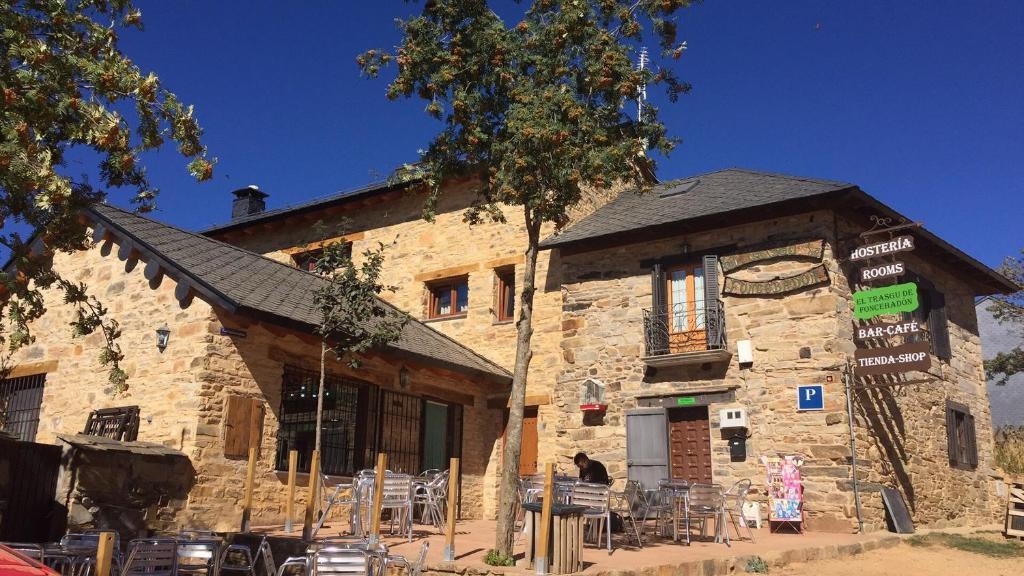
Foncebadon was pretty well deserted in the early 1990s – emigration to Madrid for work being one factor – but the growing popularity of the Camino has seen a revival and repopulation. It was home to the XIIth century hermit,Gaucelmo who built a church and a simple pilgrim hospital here.
Below is a great story about a local woman,Maria, who defied the clergy and Guardia Civil as they attempted to remove the town’s church bells.

https://wherepeteris.com/postcard-5-foncebadon-resurrection-on-the-margins/
We then rejoin the path upwards to Puerta Irago (1505m ) and the Cruz de Ferro. In his guidebook John Brierley states : – “…this majestic spot stands 1505 M above sea level and a simple iron cross stands atop its weathered pole that has become one of the abiding symbols of the pilgrim way of St James…”
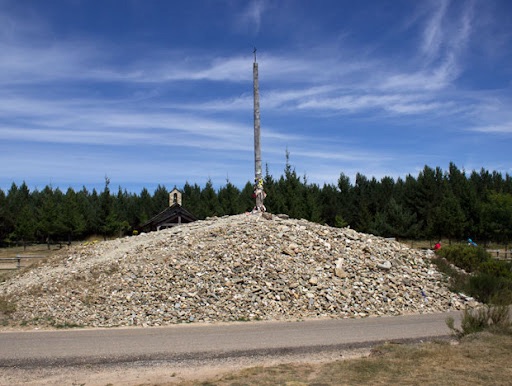
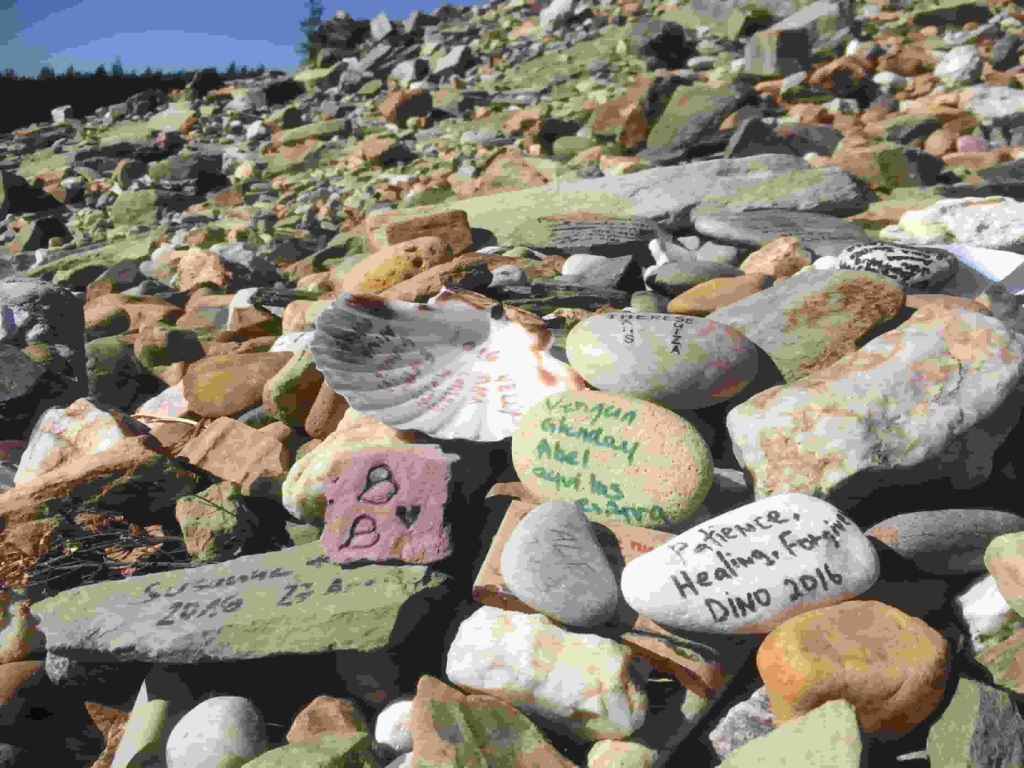
We shall have to take care on the steep descent towards Acebo,passing the tiny hamlet of Manjarin en route, with its open-air shelter built by Tomas Martinez de Paz – a self styled Templar knight in an effort to provide some basic amenities on this stretch.
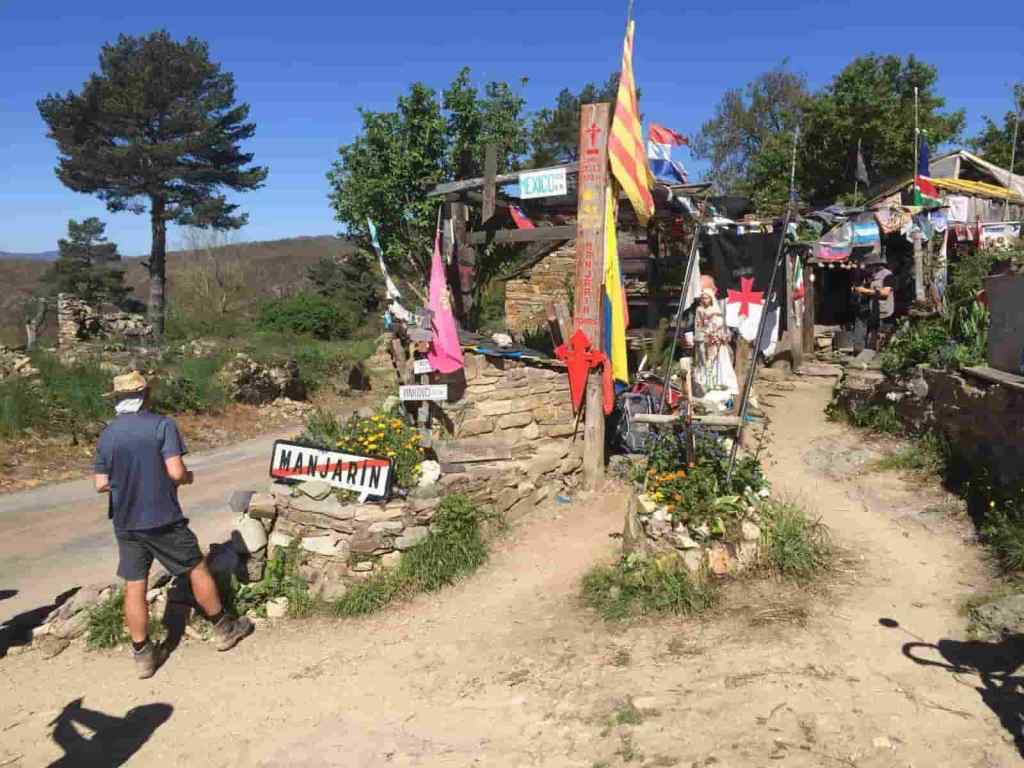
Leaving Manjarin there is another short climb up to the true highest point of Monte Irago’s pass,midway between Manjarin and El Acebo; hoping for a clear day there will be great vistas, a full view of El Acebo below and in the distance the large town of Ponferrada.
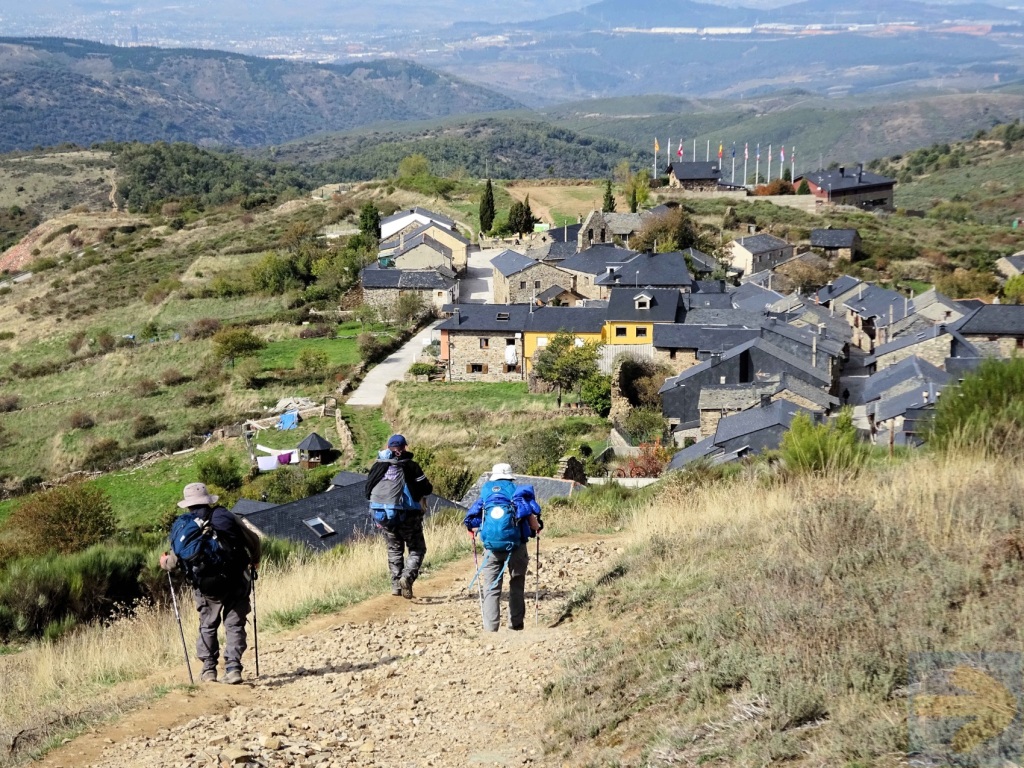
El Acebo is described as a “ delightful village – raspberry bushes grow over walls,built of stone and populated by friendly villagers. We might notice bundles of herbs tied to doors , balconies and windows – an ancient pre-Christian practice to ward off bad luck but also attracting and keeping well being.
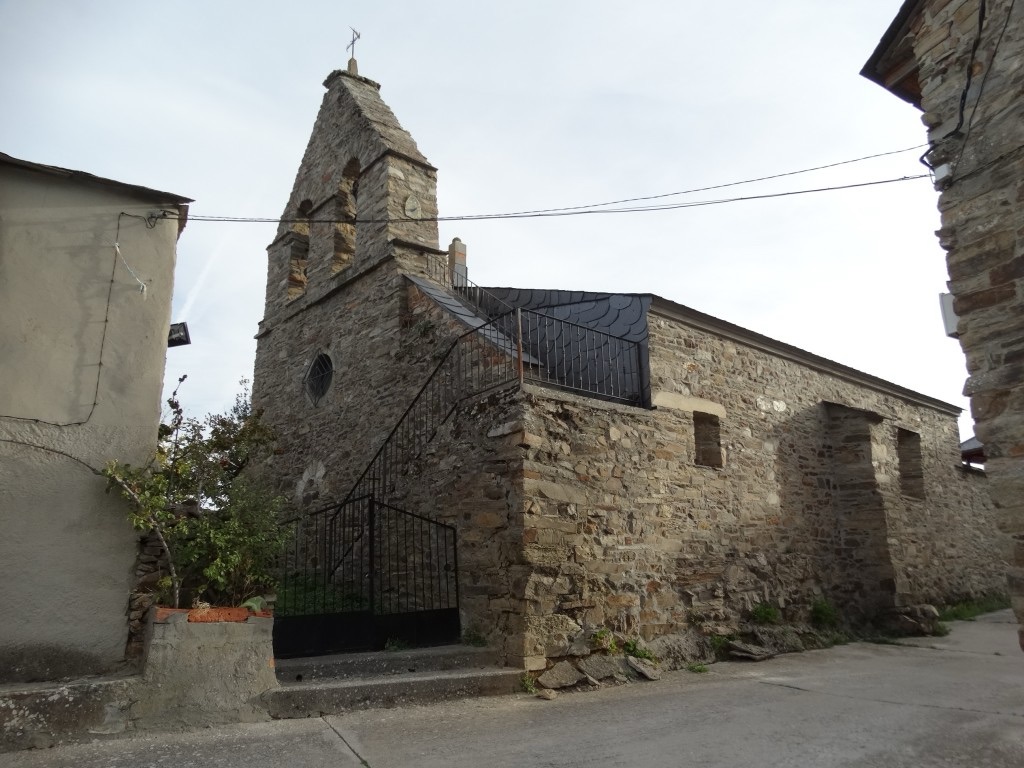
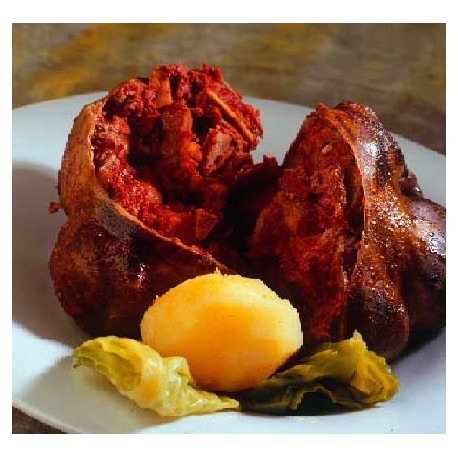
From El Acebo to Molinaseca is some of the wildest and unspoiled territory on the Camino – sublime and populated by butterflies and dragonflies- the trail goes through narrow crags and trees in a timeless setting.
Next village is Riego de Ambros – another attractive mountain village with traditional overhanging balconies – previously abandoned houses have been renovated – including the bar in the village centre. At this point a decision can be made whether to continue down on the trail ( rocky in places ) or to walk along the road ( local and not busy,but care needs to be taken on bends – most of my research on Pilgrim Forums indicates that the road is a good option,particularly if your knees are susceptible to descents, or it is raining – probably worth packing a “ high viz” vest, just in case ). Bicigrinos could be more of a hazard than cars! It is worth noting that none of the four reference guidebooks I have make much of the descent, except to say take extra care when wet.

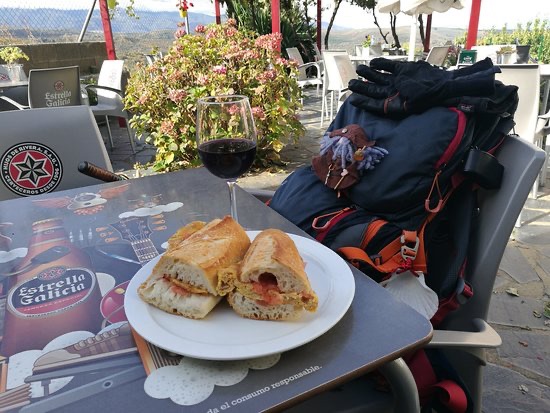

In the centre of this originally 12 th century village is the small Baroque Ermita de San Sebastián- patron saint of athletes and adventurers ( might we still qualify for the latter? ). A busy man as he was also protector against plague and calamity – we could do with people of that ilk today !
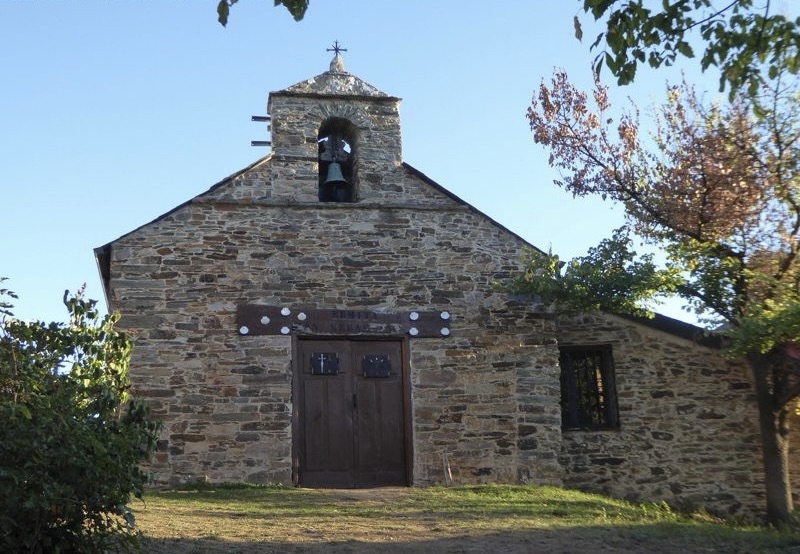
We continue our path downward to Molinaseca , through a beautiful grove of Chestnut trees – good for bird life apparently- the village disappears from view occasionally in the valley ahead. This will begin to feel more like valley country as the mountains we have descended are behind us and we face a vast fertile valley ahead, with as much Mediterranean as Atlantic flora.

Molinaseca translates a “ dry mill” but it is a beautiful well irrigated town built along the River Meruelo. Apples,pears,chestnuts red peppers, the aforementioned botillos and wine are of distinctive regional quality here. If you like fresh water fish then Trout are abundant too.
“Oh I loved that descent! The mountains were purple and lovely!” Recent quote from a Pelegrino.


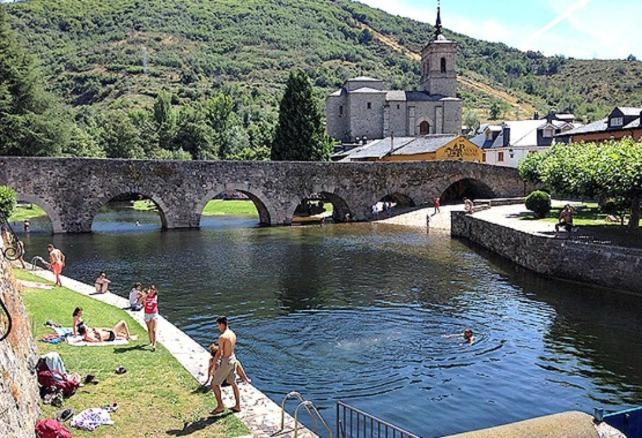
I swam in that cold water- left my pack and shoes on the grass- went in wearing my sports bra and shorts- one of my best memories of the Camino!” NB Quote from a Pelegrina,not me!”
The link below is a good guide to the history of Molinaseca and what to see.
https://www.barcelo.com/guia-turismo/en/spain/leon/things-to-do/molinaseca/

